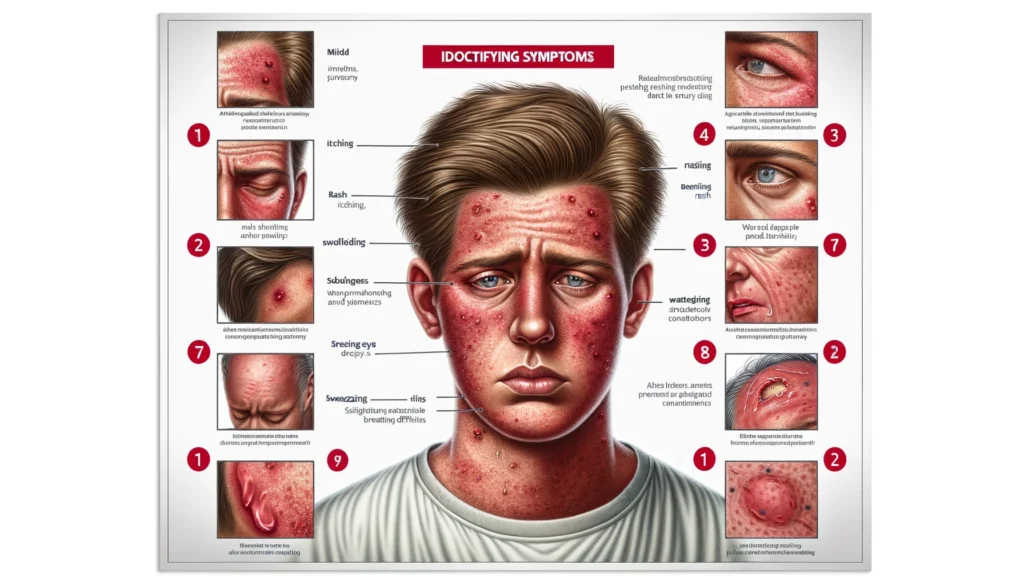Allergic reactions to synthetic hair, a condition often overlooked, can cause significant discomfort and affect the quality of life. This article delves into understanding this allergic reaction, identifying symptoms, and providing a comprehensive guide to treatment and prevention.
Table of Contents
Understanding the Allergy
What Causes Allergic Reactions to Synthetic Hair?
Understanding the allergic reactions to synthetic hair involves delving into the materials used in its creation, such as nylon, acrylic, and polyester. These materials undergo extensive chemical processing and dyeing during manufacture, introducing potential allergens.
Individuals vary in their responses; while some may exhibit no adverse effects, others might experience significant discomfort due to these chemicals. Awareness and knowledge of the components and manufacture processes of synthetic hair can aid in identifying and mitigating potential allergic reactions.
Identifying Symptoms
Understanding the symptoms of an allergic reaction to synthetic hair is crucial, as they can vary from mild itching, redness, and swelling to more pronounced rash affecting the scalp, neck, and shoulders.
In more severe cases, individuals may experience sneezing, watery eyes, and significant breathing difficulties. Recognizing these signs early is essential for prompt and effective treatment to alleviate discomfort and prevent further complications.

Diagnosis
Consulting a Healthcare Professional
When suspecting an allergic reaction to synthetic hair, it’s wise to immediately consult with a healthcare specialist, preferably a dermatologist or allergist. These professionals can perform specialized allergy tests, such as patch tests, which are crucial in identifying whether synthetic hair is the allergen causing your symptoms.
Accurate diagnosis is the key to alleviating discomfort and preventing future reactions, ensuring a path towards a safer and more comfortable interaction with synthetic products.
Self-Diagnosis
In the realm of self-diagnosis, it is recommended that individuals take note of any adverse reactions following the use of synthetic hair products. By carefully observing the associated symptoms and assessing whether they improve after discontinuing these items, one can glean insight into the root cause of their discomfort.
This initial step is indicative of the body’s response to artificial materials and serves as a preliminary gauge before seeking further professional diagnosis. Such a methodical approach ensures a more informed discussion with healthcare professionals, who can then offer targeted treatment options.
Treatment
Immediate Remedies
- Remove the synthetic hair immediately to prevent further irritation.
- Apply over-the-counter hydrocortisone cream to alleviate itching and swelling.
- Take antihistamines to manage severe itching and other allergic symptoms.
Long-term Solutions
- Corticosteroid creams may be prescribed for persistent symptoms.
- Allergy shots or immunotherapy may be recommended for those with severe reactions.
Prevention
Choosing the Right Products
- Opt for hypoallergenic or natural hair products.
- Conduct a patch test before using new synthetic hair products.
Maintaining Hair and Scalp Health
- Keep the scalp clean and moisturized.
- Avoid tight hairstyles that may irritate the scalp.
Awareness and Education
- Educate yourself about the materials used in synthetic hair products.
- Read product labels and inquire about the composition before purchase.
Check similiar hair guide: How to Use Arappu Powder for Hair?
Frequently Asked Questions
Can I develop an allergy to synthetic hair even if I’ve used it before without issues?
Yes, developing an allergy to synthetic hair over time is possible, even without previous issues. Allergies can arise from repeated exposure to certain materials or chemicals.
What are the most common symptoms of an allergic reaction to synthetic hair?
Typical symptoms include itching, redness, rash, and swelling on the scalp, neck, or face, along with possible sneezing, runny nose, or watery eyes.
How can I tell if my symptoms are due to the synthetic hair or something else?
Symptoms that appear shortly after using synthetic hair and improve after its removal likely stem from the synthetic hair. However, a healthcare professional can provide an accurate diagnosis.
Are there specific types of synthetic hair that are less likely to cause allergic reactions?
Hypoallergenic or natural hair extensions and wigs may cause fewer reactions. Still, individual sensitivities vary, so conducting a patch test before full use is advisable.
What should I do if I have an allergic reaction to synthetic hair?
Immediately remove the synthetic hair, cleanse the affected area, and apply over-the-counter anti-allergy medication or creams. If symptoms persist or worsen, seek medical advice.
How can I prevent allergic reactions to synthetic hair in the future?
Choose higher-quality, hypoallergenic hair products, perform patch tests with new products, and maintain good scalp hygiene to reduce the risk of allergic reactions.
Is it safe to use anti-allergy medication regularly to prevent reactions to synthetic hair?
Frequent use of anti-allergy medication without medical advice is not advisable. Avoid allergens where possible and use medications only when necessary, following a healthcare provider’s guidance.
Conclusion
While allergic reactions to synthetic hair can be distressing, understanding the causes, recognizing the symptoms, and knowing the treatment options can significantly mitigate the effects. By adopting preventive measures and choosing the right products, individuals can enjoy the benefits of synthetic hair without compromising their health.
